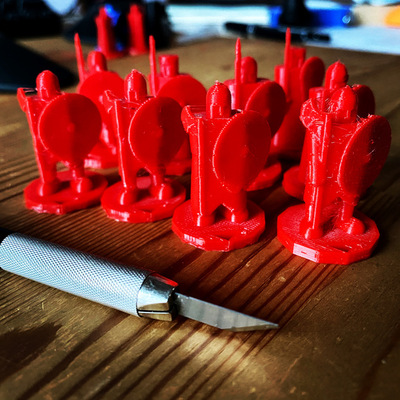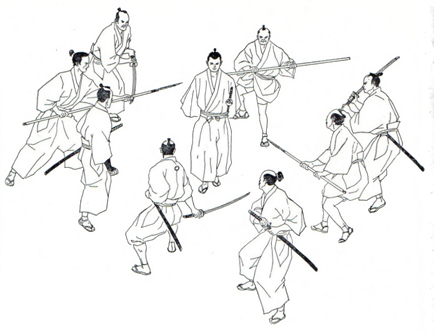
|
Eow Links 11 |
| 2021-03-13 |
Eow Links 11

"Eow" for End Of Week. Links I gathered during the week. This is iteration 11.
For more weekly links, head to The Seed of Worlds Shiny TTRPG link collection.
This week, interesting posts started popping up on Wednesday or I wasn't looking hard enough on Monday and Tuesday.
Players don't need the rules (Old School Ramblings)
I am following Eric Diaz blog because he's one of those who rework their fifth edition to make it more enjoyable at the table.
On the other hand, I play the game with experienced players... who also play GURPS, Savage Worlds, and many other games. They are fairly smart guys, but there is no way they can memorize all the rules of all those games, and that's not our focus anyway. When playing 5e, I've realized they forgot half their features by level 10. I can only imagine how level 20 playes, since we didn't get there.
Of course, memorizing and using many features forces you to focus on the character sheet - but the moments we enjoy the most in our games are focused on the fictional world.
Let me weave in Eric Diaz's next post:
Minimalist D&D IX - Sidekick D&D, the easiest 5e available!
However, these rules for sidekicks distill the things I find most interesting about the "three classes" in 5e (warrior, expert, spellcaster).
(...)
And the spell-caster is mercifully short. 16 spells known, 5 cantrips, a total of about 75 "spell levels" total... This is manageable!
Downtime Activity: Gathering Intelligence and Spying
The DM has a strong interest in enabling this activity, because good intelligence is an opportunity to introduce hooks that interest players, and also allows meaningful player choices.
The fine tome of Intelligence Activities in Ancient Rome: Trust in the Gods but Verify is lamenting in my to-read stack. Patience! Trusting is good, verifying is better.
DM Binder – I’m putting together a folder with old-school paper notes for this campaign. I’ve already got it planned out, and it will be a combination of rules reference, random tables, worksheets, and maps. Hopefully I’ll be able to index it, but at the very least I’ll put in some labelled tabs. Awww, yeah.
Not just DM binders, but a whole walk through the tools supporting a new campaign for Uncaring Cosmos.
A forgotten OD&D Rule for Fighters
One of my favourite rules from TSR era D&D is that fighters get 1 attack per level of experience versus 0-level Humans and monsters of less than 1 HD
An excellent post, and it closes with images of "Tsubaki" Sanjuro defeating opposition with fewer slashes than adversaries.
That discussion is echoed in
Friday Figures: Fighter Multiattacks
So in total: The fighter-multiattacks rule is written into Gary's rules before OD&D, after OD&D, in the FAQ for OD&D, and in the mass-combat rules for OD&D. So in total: yeah, it's pretty clearly a consistent intent there (and another example of his tendency to "implicitly assume rules from the prior edition").
Grymlorde has another fine post this week:
Torches through the editions & Real World
Torches require a good amount of oxygen to burn properly and they give off quite a bit of noxious smoke. This is why historically, torches were only found indoors in great halls. Mining and cave exploration was done with candles rather than torches because torches burn up the “good air” in tunnels and caverns.
which seems to continue in
An oft forgotten rule in OD&D that should be the norm
Dungeons are not fair. Dungeons are not historical nor do they slavishly follow the laws of physics. Dungeons are (thankfully) an anomaly.
Tabletop RPGs as Performance Art
It's art, if I may be so pretentious; its very existence is the challenge. It's art when you read it, it's performance art when you try to run it, or when you play in it. It's those interactions between a prospective GM trying to interpret my ideas and filter it through their own sensibilities, and then any players interacting with the setting as presented by myself or another GM.
From a referee point of view, most of the TTRPG content is read and rarely performed. From the point of view of my players, it's all performance (hopefully fun as well).
The Roots of Slot-Based Encumbrance
When I started adapting and modifying the old rules I like into my home rule set, slot-based encumbrance was exactly what I wanted, but I didn't know how pervasive slot-based encumbrance had become out there in the land of indie retro game designers and clone warriors. (More on a few of those below.) I was unaware of much of that. My inspiration was coming from the solo gamebooks of my youth in the early '80s instead.
I am keeping the link to this post preciously. For now I have avoided using encumbrance and readying rule, we fared well so far with just common sense and trust, but who knows.
If you are still hungry for links, Alex Schroeder has posted a Blogosphere article which points at fine posts he found in his feed.
And so we get to the RPG trope where violence actually does work, most of the time, because players and referees and designers usually wish that it would.
Alex also pointed to TFP DMG: How To Run Combat.
The classic OSR rhetoric is to say that "combat is a failure state". That is, the optimal tactic is to avoid combat at all costs. This is true but let's be honest - violence is both inevitable and interesting. Let's get into it!
